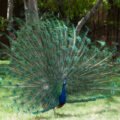
Elusive Ghosts of the Mountains: Snow leopard are known as the “ghosts of the mountains” due to their elusive and solitary nature. Their well-camouflaged fur helps them blend into their rocky habitat, making them difficult to spot.
Habitat Range: Snow leopards inhabit the mountainous regions of Central and South Asia, including the Himalayas, Altai Mountains, and the Tibetan Plateau. They are adapted to living in harsh, cold environments at high altitudes.
Endangered Status: Snow leopards are listed as “Vulnerable” by the International Union for Conservation of Nature (IUCN). Their population is estimated to be between 4,000 to 6,500 individuals, and they face threats such as poaching, habitat loss, and retaliatory killings by herders protecting their livestock.

Unique Adaptations: Their long, thick tail provides balance and acts as a warm blanket to wrap around their bodies. Snow leopards also have large nasal cavities that help them breathe the thin mountain air.
Masters of Stealth: Snow leopards are incredible stalkers and ambush predators. They can leap up to 50 feet in one bound, which helps them catch their prey, such as blue sheep and ibex.

Fur and Coloration: Their fur is beautifully patterned with rosettes (ring-like spots) that help them blend into the rocky terrain. Their fur changes in intensity with the seasons – lighter in the winter and darker in the summer.
No Roaring Here: Unlike other big cats, snow leopards cannot roar due to the absence of certain vocal fold structures. Instead, they communicate through vocalizations like hissing, chuffing, and growling.

Highly Territorial: Snow leopards have vast home ranges, which can span over 100 square kilometers. Males’ territories often overlap with several females’ ranges, but they are solitary animals except during mating season.
Conservation Efforts: Various conservation organizations and governments are working to protect snow leopards and their habitats. Initiatives involve community-based conservation, anti-poaching efforts, and mitigating human-wildlife conflicts.
Symbol of Central Asia: Snow leopards are important culturally, often symbolizing the rugged, mountainous landscapes of Central Asia. They are revered as spiritual and national symbols in countries like Mongolia and Kyrgyzstan.

These magnificent creatures play a crucial role in maintaining the balance of their ecosystems. Conservation efforts are crucial to ensuring their survival and preserving the biodiversity of their unique habitats.

